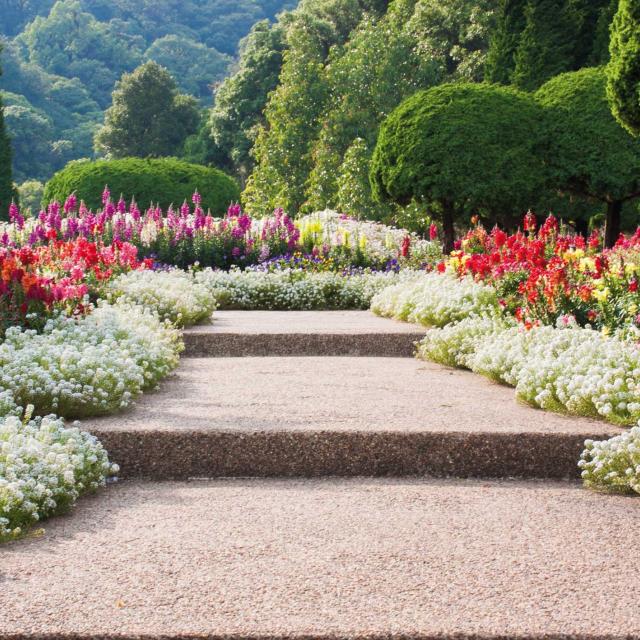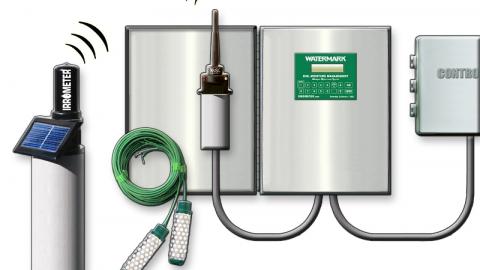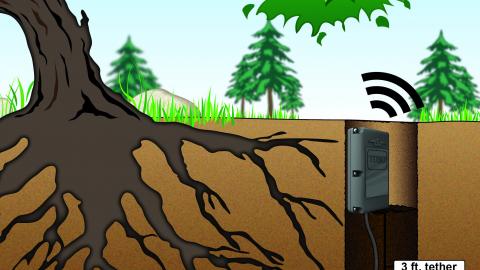Adjusting the scheduling programme can result in a saving on water of up to 30% compared with using the same programme for the whole season.

Essential in guaranteeing the sustainability of the investment in the green spaces, irrigation falls in line with the philosophy of managing water consumption with the utmost precision. This nature-induced reality has brought a new perspective to the professions involved in designing and installing automatic irrigation systems.
“Our profession has come a long way”, stressed Pierre-Alain Madelaine, president of the Automatic Irrigation Trade Association (Synaa), “twenty years ago there was an emphasis on fighting vandalism and we had to act in order to reduce vandal damage to the installations. Nowadays, we are working on the technique of achieving a more precise precipitation rate, i.e. exactly the same amount of water applied over the whole surface area.” The design of an automatic irrigation installation should be carried out by a trained professional because it is no longer a question, as in the past, of recovering 80% of a green space. Nowadays, we are looking at 100%. It is no longer acceptable for a surface area, however small, not to receive the amount of water that it requires. The design should take one important factor into account: the amount of water applied close to the sprinkler is not the same as it is at the end of the stream. In order to achieve an optimum coefficient of uniformity, the spray from each sprinkler must reach the foot of the next sprinkler. Accurate distribution allows for the irrigation time to be reduced and, consequently, there will be less water consumed. Very precise sprinkler-by-sprinkler adjustment is possible with modern tools, even remotely, by using a computer or Smart Phone with an internet connection. With just a few clicks, the manager can step in to ensure that there is optimum application of the irrigation water. By way of an example, we are able to calculate that the well-managed irrigation of a sports field needs to have the scheduling changed about eight times at the very least, in the course of the irrigation season, including having the water flow switched on when required and stopping the system during the frosts. These adjustments made according to climatic variations allow for a 30% saving on water compared with applying the same amount right through the season, without making any changes. A specialist firm such as Soisy Arrosage manages with precision automatic irrigation installations situated on the African continent from its headquarters in the Île de France, using meteorological data to calculate the potential evapo- transpiration (ETP). The long-term installation of the system means that a trench has to be opened up. New subsoiling techniques make it quicker to lay pipes nowadays, practically eliminating the need for extra intervention. It is perfectly adapted to pipes made of high density polyethylene, which represents a major step forward: this flexible material is unbreakable, unlike the PVC used previously, which had to be glued and laid on sand and the pipe connections electro-welded or butt welded. The technique requires a different approach because it needs a source of electricity, but, on the other hand, the assembly is remarkably reliable. Even though the connections are less expensive, more labour is required for the welding. However, the books are balanced financially and the technique guarantees the integrity of the installation for a good many years. The absence of any slow leakage helps to prevent any imbalances between flow and pressure, this being a source of water wastage over time. During the winter period it is necessary to ensure that there are the means available for draining the water as completely as possible in order to avoid any risk of rupture or even the splitting of the components. When selecting the parts, professional designers and installers basically rely on three main manufacturers: Hunter, Rain Bird and Toro. These American firms offer an extensive range of spray heads and programmers. The Israeli company Netafim, a specialist in micro-irrigation, can be added to these.
Irrigation improves the carbon footprint
Water stress will weaken the plant. A lawn will become thinner, leaving space for weeds to grow; and in only a few years it will have to be re-laid. The impact of irrigation on the development and flowering of the plant is undeniable: its very existence is at stake. Irrigation and automatic irrigation in particular, plays an important role in the carbon footprint of an urban green space: studies have shown that an irrigated green space is more capable of absorbing CO2 and has an effect on the temperature. Research work undertaken by Météo France (French National Meteorological Service), l’Agence parisienne du climat (Paris Climate Agency), le Centre international de recherches sur l’environnement (International Centre for Research on the Environment and Development) and Centre scientifique et technique du bâtiment (Scientific and Technical Research Centre for the Construction Industry) aims to define the course of action to be taken during heatwaves, which are going to become even more frequent over the next few decades. The cities are more vulnerable, given the existence of urban heat islands, which are formed because the air cools more slowly in cities than in rural areas. The Epiciea project “A Multidisciplinary Study on the impact of climate change on the Greater Paris region” has shown that the development of irrigated vegetation, whether at ground level (lawns) or on the roofs, results in a significant fall in temperature, both during the day and at night.


